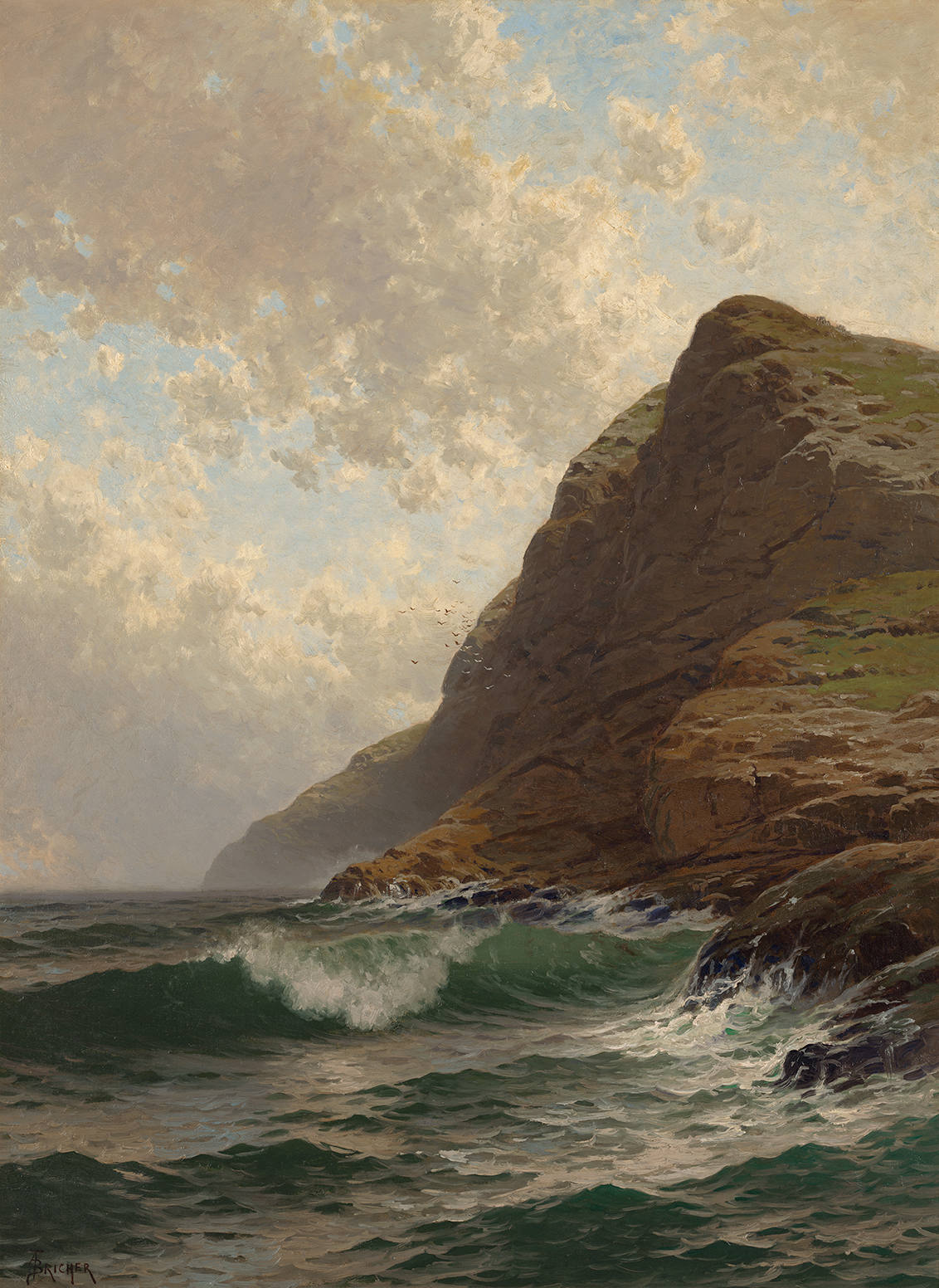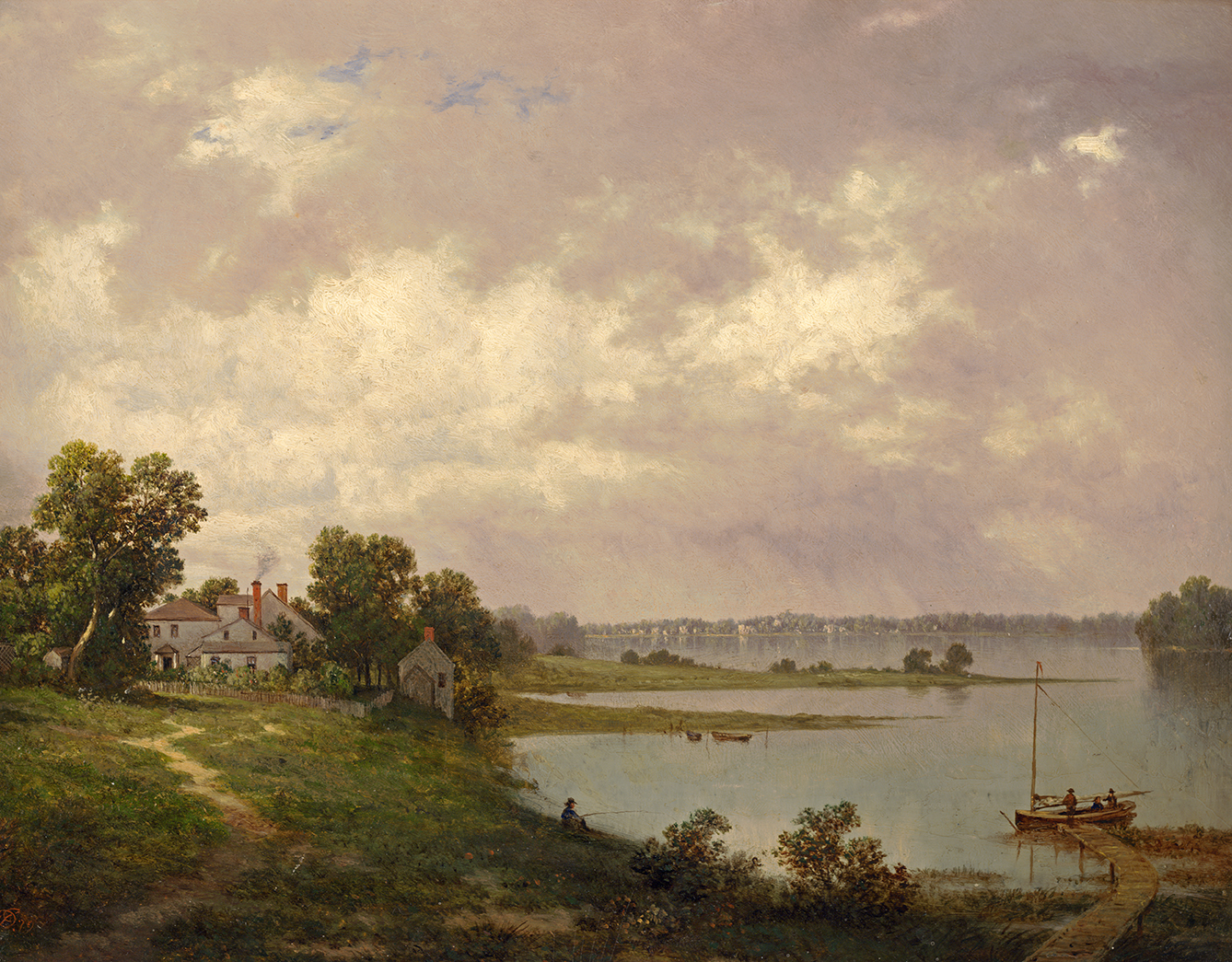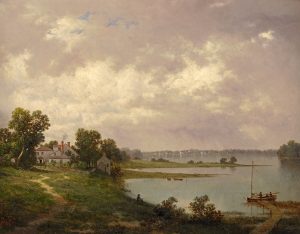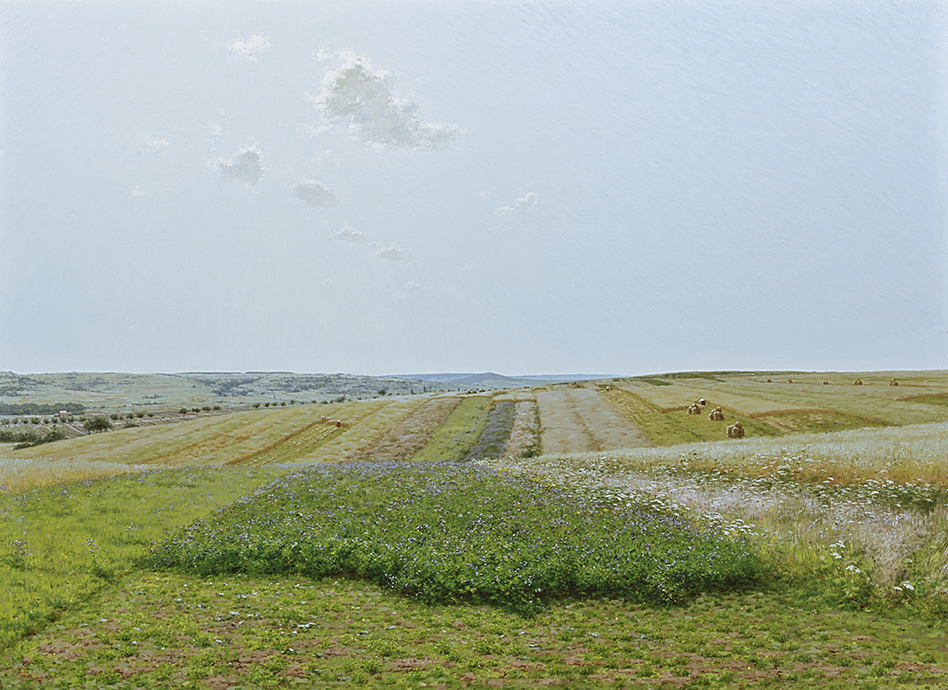
In this painting, Jan Monchablon celebrates the agricultural abundance of the plains of the western Vosges region. It shows a windless, sunny day at harvest time, and as usual, the light itself is an important subject. Monchablon sets the horizon low, causing the pale blue sky to appear vast. He applies his paint so that his brushstrokes follow the rays of the sun that backlights the little clouds in the foreground.
Despite the low vantage point, which radically foreshortens the rolling landscape, Monchablon implies deep spatial recession. The fields, with their Persian-miniature detail, begin immediately, as if beneath the viewer’s feet, that unroll toward the horizon, their distinctness and color fading rapidly. Yet even in the distance particulars can be seen – a strand of trees marking a road on the left and minuscule harvesters working in the field on the right. Tiny puffs of cloud indicate the dryness of the weather and intensify the effect of a limitless sky.
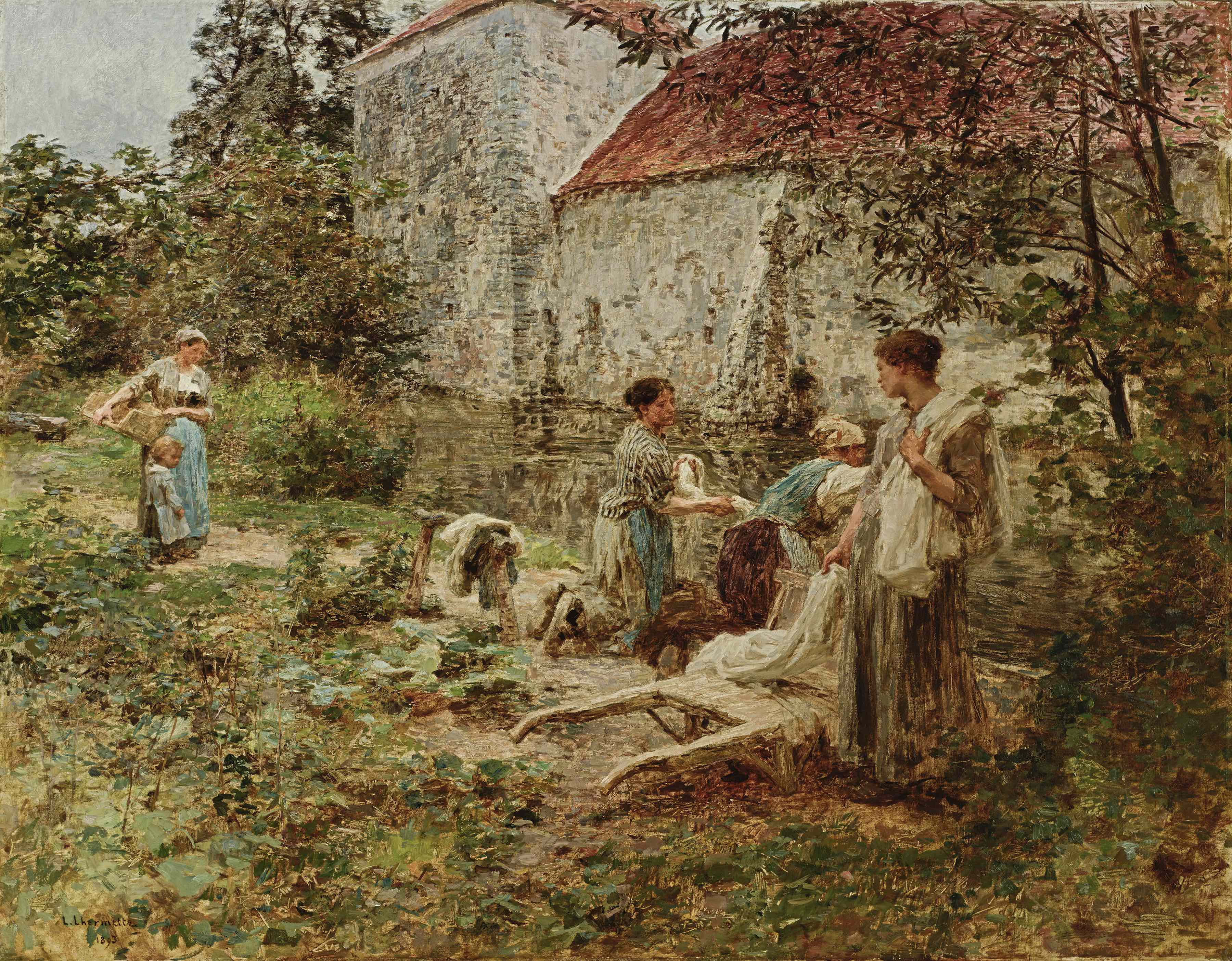
The Moated Wall, by Leon-Augustin Lhermitte, depicts three laundresses engaged in their work. Two of the women are kneeling beside a moat; the third woman stands near them holding several large pieces of laundry. A fourth woman and her child approach the group from the left side of the canvas. Behind the women is a rough wall of an ancient building that is reflected in the moat where the women do their laundry. The women are surrounded by a circle of dark foliage and the brushstrokes are rough, reinforcing the conditions of rural work and life. Lhermitte provides compositional dimension and balance to the earthly colors of the country scene by bathing the middleground in soft blues and white to draw the viewer’s eye toward the women and their interactions with one another. There is an emphasis on the women’s dignity, even while they are going about their humbling work, with the use of light and the way they pose. The values of work and family appear repeatedly in Lhermitte’s work, and to the city-dwellers of his day, Lhermitte’s paintings represented “the good old days,” or a better time lost in the march of the Industrial Revolution.
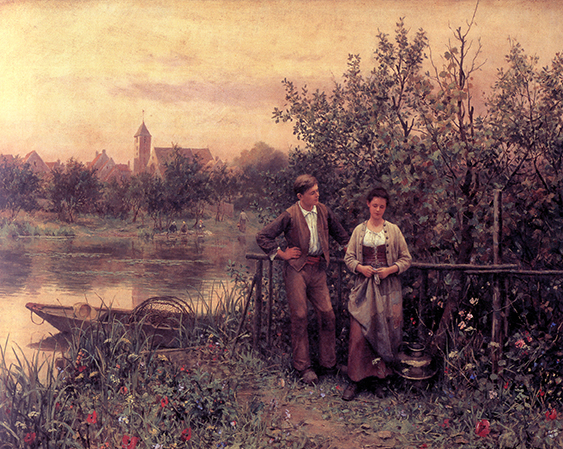
Paintings of peasants were extremely popular in the late nineteenth century and reflect middle-class attitudes about the rural lower class. Daniel Ridgway Knight does not present the hard facts of French rural life; instead the viewer is titillated with a flirtation between an adolescent boy and girl.
Like other paintings of courting peasants from this period, their actions also imply moral lessons. The boy seems confident, although not aggressive, with his jaunty pose, while the girl looks away demurely and nervously. Both have put aside their tasks for this momentary romance; her pitcher rests on the ground, while his boat and fish trap are abandoned at the shore. Behind them the working women and the church are reminders of the virtuous life of faith temporarily forgotten but ever present. The glowing yellow sky and bright poppies add to the tenderness of the moment, while details like the boy’s wooden shoes help to create the impression of a county vignette brought to life.
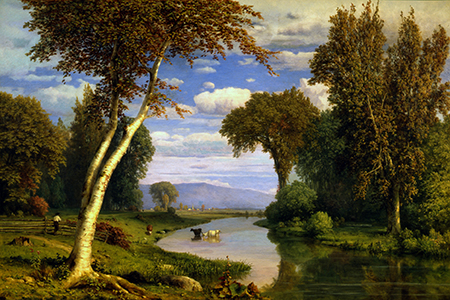
George Inness created visions of man in harmony with nature. Such “civilized” landscapes set Inness apart from his contemporaries in art, such as Thomas Cole, Frederic Church, and Albert Bierstadt, who were famous for their celebrations of the untamed wilderness.
Juniata River conveys the serenity of a summer day. No wind stirs the trees or ruffles the slow-moving river. A cowherd daydreams; a rotting tree stump shelters flowers, implying life evolving from death.
The twenty-six-year-old Inness painted this pastoral scene just two years after his return from Europe, where he had been impressed by the work of the French Barbizon artists. Juniata River is one of the first works to show how he assimilated their lessons. The most evident influence was the color, which is no longer dark and tonal but brighter, less unified, with abrupt changes from brown to blue-green in foliage and sky, and surprising pastels in the stream applied in thick dabs—a change from his earlier, tighter method.

On one level this painting shows a stage stopping at a country village for a change of horses, but on another it alludes to the alterations in American society post-Civil War. In the center of the painting Edward Lamson Henry features an elegant Concord coach that has brought fashionable city folk to a rural town. In this way the scene demonstrates how the network of stage lines was causing urban lifestyles to impinge on old country ways.
Peripheral details in the work may refer to other kinds of changes in American life. The inclusion of blacks—a groom bringing fresh horses, a little girl shyly peeking out from behind a tree—is a reminder of their altered political position post-Civil War. The poster on the foreground tree reading “Grand Democratic Rally…Victory,” undoubtedly pertaining to the 1880 election, may be an indirect reference to the extension of the franchise to blacks resulting from the passage of the Fifteenth Amendment to the U.S. Constitution in 1870.
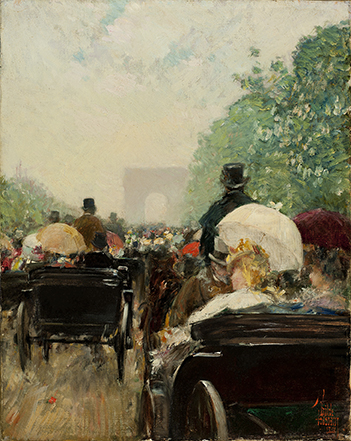
Carriage Parade is an example of the Impressionist style Childe Hassam developed while in Paris from 1886 to 1889. It displays the light palette, broken color, and modern subject matter associated with the work of his French counterparts. To achieve natural light and color effects, he followed their practice of painting outdoors. The life and movement of the streets fascinated him, so he worked from cabs, setting up his canvas on the seat before him.
In Carriage Parade, there are myriad touches of blue, yellow, plum, red-orange, and green, representing the artist’s own vision and adding energy to the scene. For this painting, Hassam gazed down one of the broad avenues-perhaps the famous Champs-Elysees-that leads to the Arc d’Etoile, seen faintly in the distance.
Hassam’s vigorous brushwork adds to this feeling of a quickly captured moment in time. Placed at carriage-level, the viewer seems to be within the stream of vehicles that made up this daily afternoon ritual of fashionable Parisians.
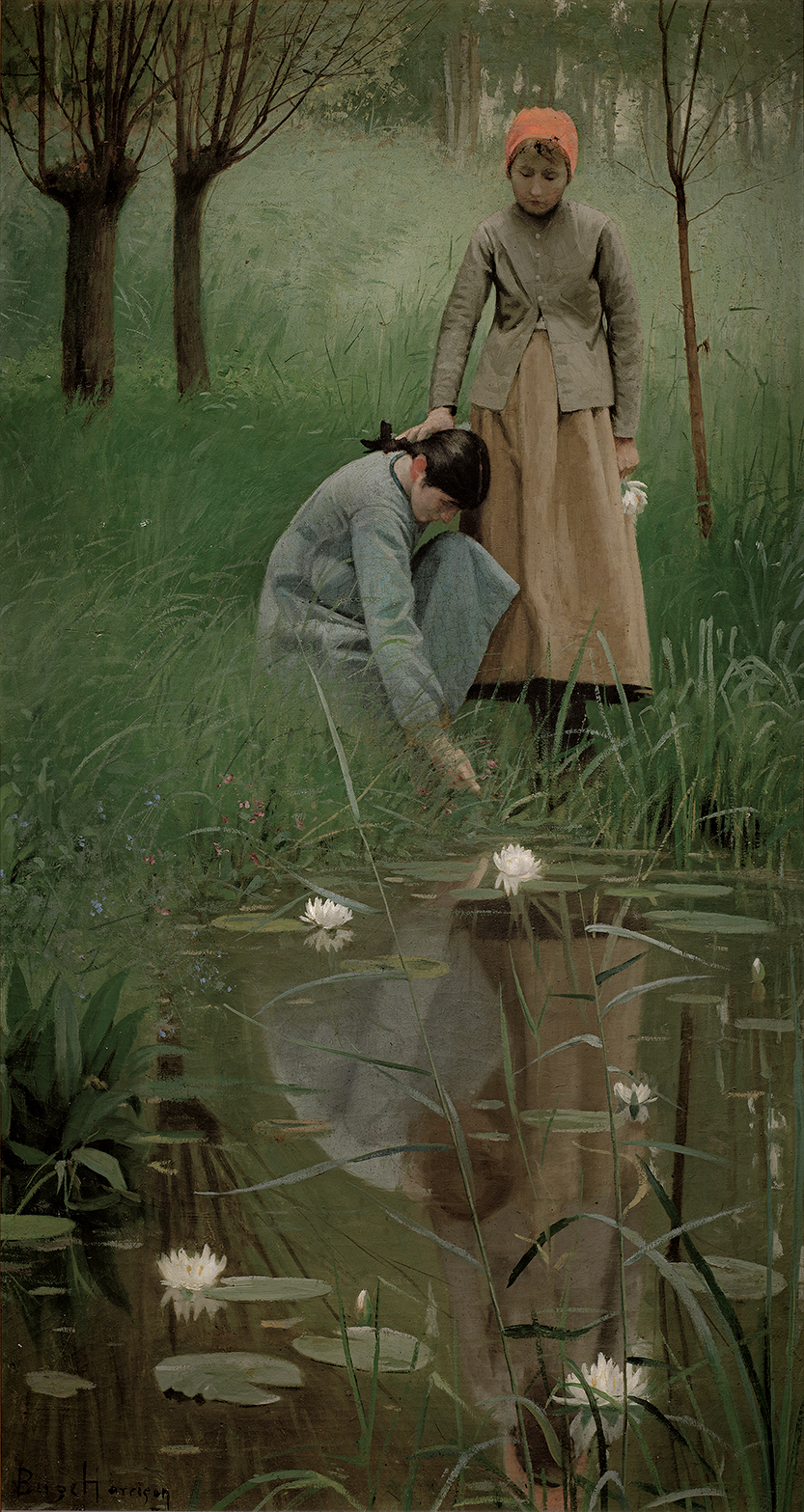
The Mirror, by Lovell Birge Harrison, depicts two women, dressed simply in neutral colors. One woman stoops beside a pond as the second woman seems to place a comforting hand on her shoulder. The attention of both women is focused on a white water lily in the pond. In the foreground, tall reeds and lilies point diagonally toward the clear water framing the women’s isolated reflections. The gesture of the woman in brown to the woman in blue is one of tenderness, giving the painting a feeling of intimacy and closeness. Furthermore, diffused light and loose brushwork balance the serenity of this painting. The women, and the surrounding nature, share a quiet moment of harmony on a misty day.
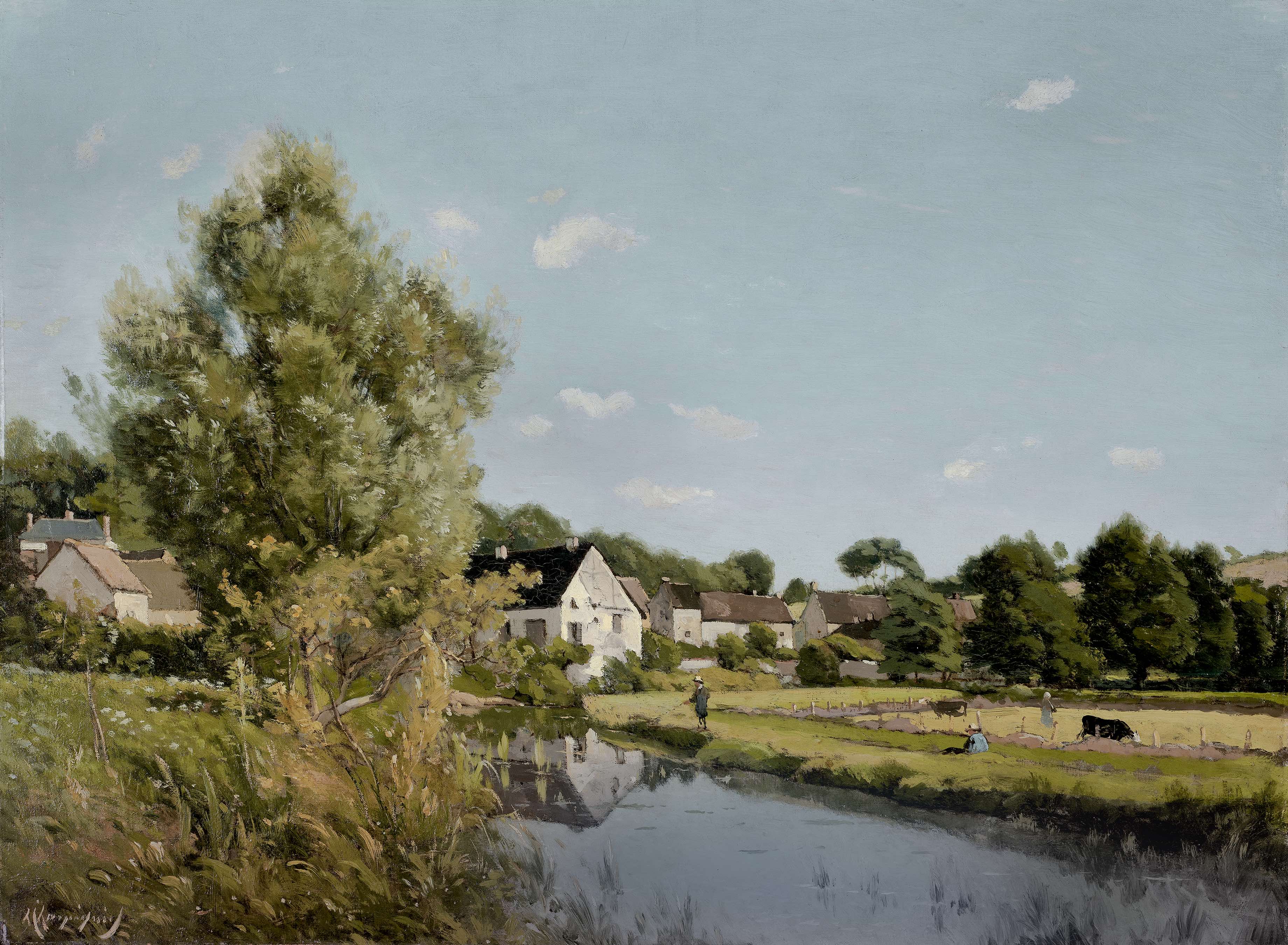
The Mill Stream is quite typical of Henri-Joseph Harpignies’ mature work. Although he enjoyed Italian scenery, Harpignies spent most of his time as an artist in various regions of his native country. This work is one of his many views of the French countryside. A lazy stream leading through a pasture to a village, a boy fishing, and two peasants are represented in his usual straightforward manner, without sentimentality or drama.
The painting shows the artist’s preference for fine weather and summer days, which help establish the tranquility of the scene, as do the predominant creamy blues, greens, and beiges. To invigorate this simple scene, Harpignies has skillfully varied the paint application: in the foreground he brushed on his oils in emphatic dabs, cursive strokes, and long, calligraphic lines, while farther back his paint is blended to create depth. This painting technique tends to eliminate details, yet Harpignies nevertheless defines landscape and architectural forms enough to give structure to his work.

